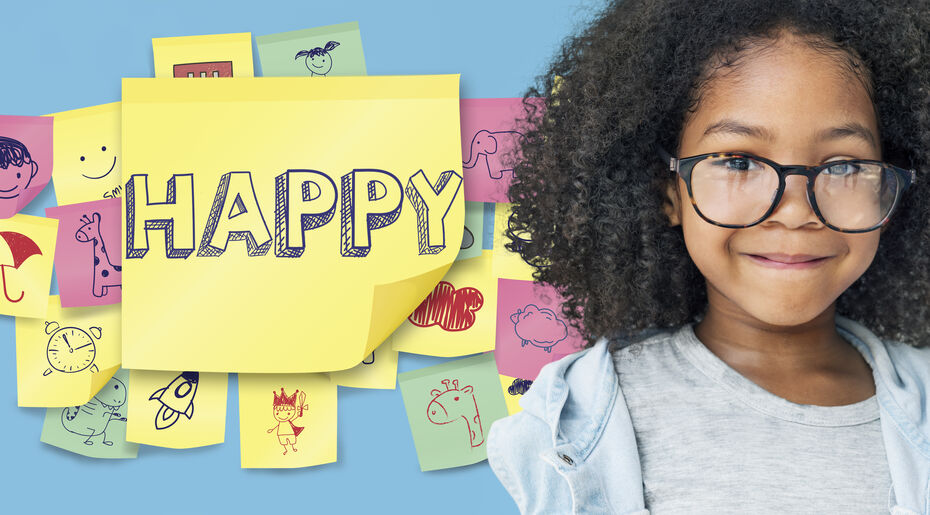
Welcome back to the third of our 4-part series focusing on how we can help young children in the process of unpacking their backpacks that are overflowing with emotions, both big and small.
Last time, you followed along with us as we supported Annie on her journey towards identifying and understanding her big feelings in order to lighten the weight of the emotional backpack that she carries with her each and every day.
Let’s keep unpacking.
Let’s return once more to our friend, Annie.
In our previous piece, we highlighted how Annie would let us know her feelings of sadness by taking the space she needed in our classroom CalmDown Corner and nonverbally show us her feelings on Our Emotions Board.
These behaviors cued us into what Annie might be feeling, and our goal was to support Annie in putting the pieces together so she could verbalize and truly understand not only what her feelings are, but what causes them.
We supported Annie in making strides towards identifying and understanding her feelings, but her backpack was still being weighed down by another challenge on an almost daily basis.

When her sad, angry, frustrated, or worried feelings became too heightened, she would resort to melting down: she would cry, scream, throw things, turn her body away from us, and refuse to talk about her feelings or what caused them.
Finding those words can be challenging for anyone in the heat of an emotional moment, but by consistently using ECSEL language, tools, and techniques, we were able to support Annie and the other children in our class (who were picking up on Annie’s emotional reaction themselves) in being better able to appropriately express their feelings by channeling their actions into words.
It is important to note here that not everyone is able to communicate verbally, and supporting anyone in finding alternative or nonverbal ways, such as pointing at Our Emotions Cards, to communicate their emotions and needs is just as significant. In fact, incorporating both verbal and nonverbal strategies is a great way to scaffold appropriate expression and communication around emotions for all children.
For Annie, her ability to identify her feelings on Our Emotions Board was a huge step towards appropriate expression, and we met her at her level with verbal support to validate her feelings and appropriate actions both in and out of the heat of the moment:
A critical step in supporting children such as Annie in appropriately expressing their big emotions is by modeling how we do so ourselves.
Rather than shying away from expressing our own emotions, we as educators need to feel empowered to discuss our emotions appropriately with the children in our care.
Whenever we were feeling sad, frustrated, or disappointed about things that were happening in our classroom, we would let Annie and others know — not by yelling, but by calmly saying, “I’m feeling frustrated because you aren’t hearing my words. What can we do to change that?”
By providing modeling and guidance for Annie and the rest of our class, they were consistently introduced and exposed to the appropriate expression of emotions, both cozy and prickly. Instead of a heightened response such as screaming while angry, melting down when sad, or running around the room while excited, we would give Annie and others tangible strategies for how to better express these feelings.
If we tell kids not to do something, it is important to follow-up with something appropriate they can do. When we close the door on an inappropriate action, we must open the door for an appropriate action kids can do.

For example, one afternoon Annie became angry because a friend took the toy she was playing with, and her instinct when filled with these big, angry feelings was to hit.
First, we calmly intervened by stopping the inappropriate behavior, and describing what we saw occurring, so Annie could understand the emotions behind her own actions: “I can see you are feeling so angry. Instead of hitting your friend, which will really hurt their body, let’s take a deep breath and try using our words instead.”
We helped Annie co-regulate to a point she was able to hear and process our words.
We then modeled appropriate options out of the heat of the moment, when Annie was calm. We suggested she could say something like: “I was using that toy. It made me feel angry when you took it.”
Using appropriate language to express emotions allowed us to move towards finding a solution for Annie to feel better and help her know what to do differently next time.
When children are able to practice expressing their emotions appropriately with guidance from trusted adults, it can make all the difference when it comes to finally being able to manage them.
And once again, we are able to help them unpack one more thing from their backpack, which is feeling lighter already!
These Posts on Emotional Intelligence
Housman Institute, LLC
831 Beacon Street, Suite 407
Newton, MA 02459
info@housmaninstitute.org
(508)379-3012
Explore
Our Products
Legal
Connect
Contact
Join our Mailing List!
Subscribe to receive our newsletter, latest blogs, and ECSEL resources.
We respect and value your privacy.
Comments (2)